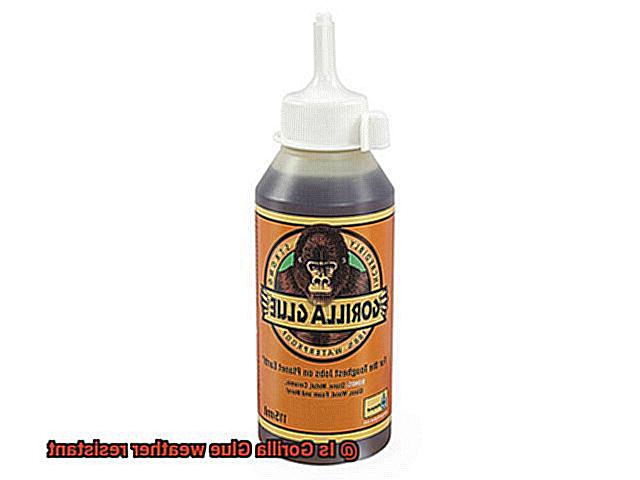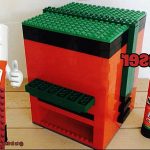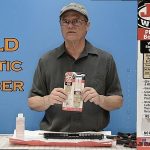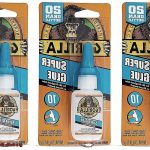Welcome to our blog post where we tackle the burning question: Is Gorilla Glue weather resistant?
Whether you’re a seasoned craftsman or just love getting your hands dirty with some good old DIY, we all know how important it is for our projects to withstand the wrath of Mother Nature. There’s nothing worse than putting your heart and soul into creating something amazing, only to have it destroyed by a sudden downpour or scorching heatwave.
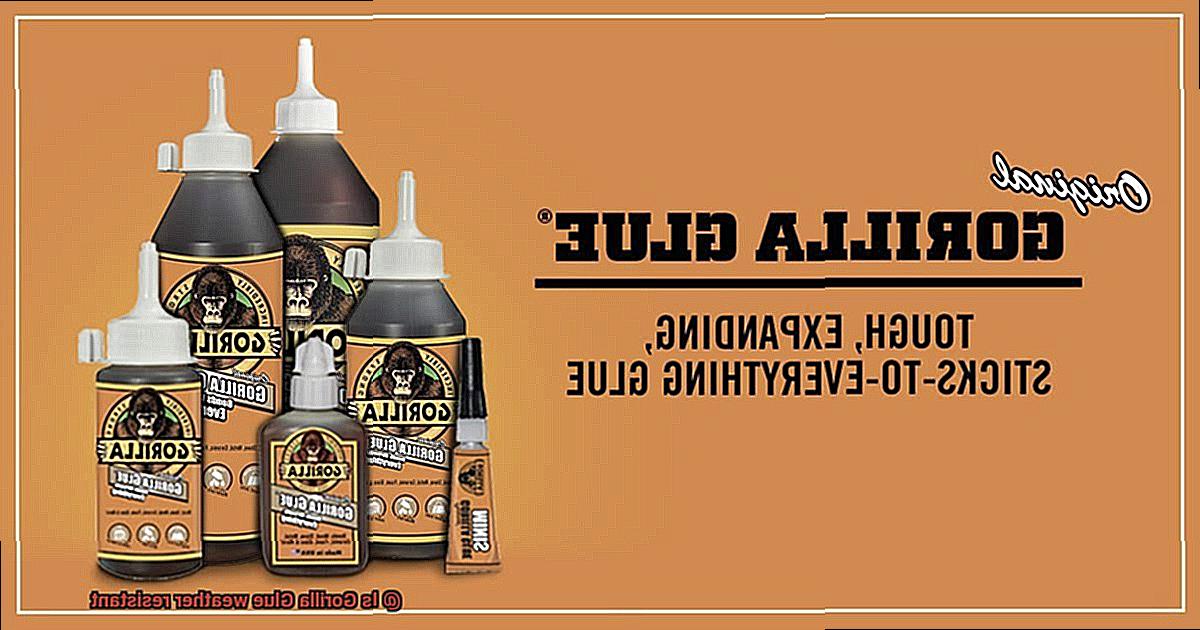
But fear not, because Gorilla Glue might just be the superhero adhesive you’ve been searching for. Renowned for its incredible strength and versatility, this glue has become a go-to choice for bonding various materials together.
But does it hold up against the elements? Can it handle the blazing sun or relentless rain?
So get ready to discover if Gorilla Glue truly stands tall against Mother Nature’s fury or if you’ll need to explore other options for your outdoor projects.
What is Gorilla Glue?
Contents
- 1 What is Gorilla Glue?
- 2 What Makes Gorilla Glue Weather Resistant?
- 3 Advantages of Using Gorilla Glue in Outdoor Projects
- 4 How to Maximize the Weather Resistance of Gorilla Glue
- 5 Does Prolonged Exposure to Extreme Weather Conditions Impact the Performance of Gorilla Glue?
- 6 Other Uses for Gorilla Glue
- 7 Tips for Applying and Removing Gorilla Glue
- 8 Conclusion
Gorilla Glue: Your Ultimate Solution for Strong and Versatile Adhesion
When it comes to finding an adhesive that you can rely on for its exceptional strength and versatility, look no further than Gorilla Glue. This popular brand has gained a well-deserved reputation for its ability to bond various materials together, from wood and metal to stone and ceramic. But what exactly is Gorilla Glue?
Gorilla Glue is a polyurethane-based adhesive that sets itself apart from the competition with its incredible strength and durability. It forms a bond that can withstand even the harshest conditions, making it suitable for both indoor and outdoor use. This means that whether you’re repairing broken furniture, tackling woodworking projects, or fixing automotive parts, Gorilla Glue is the go-to solution.
One of the standout features of Gorilla Glue is its impressive weather resistance. The polyurethane formula used in Gorilla Glue makes it resistant to water, heat, cold, and other environmental factors. Once fully cured, this adhesive becomes waterproof and can withstand exposure to moisture without losing its adhesive properties. Say goodbye to worrying about your outdoor repairs getting ruined by rain or humidity.
But that’s not all – Gorilla Glue is also heat-resistant. It can handle high temperatures without melting or losing its bond, making it ideal for use in hot climates or projects exposed to heat sources. Furthermore, this adhesive remains effective even in freezing conditions, making it suitable for winter repairs or outdoor projects in colder climates.
The versatility of Gorilla Glue is further enhanced by its different forms to suit various applications. Liquid glue is perfect for general bonding needs, while gel glue is designed for vertical applications where you need the glue to stay in place. If you require a quick fix, super glue provides instant bonding power. And for more demanding projects that require filling gaps or creating a stronger bond, epoxy is the way to go.
Whether you’re a DIY enthusiast or a professional, Gorilla Glue is an essential tool in your arsenal. Its strength, versatility, and weather resistance make it suitable for a wide range of applications. From repairing broken wooden furniture to fixing leaks in gutters, Gorilla Glue can handle it all.
However, it’s important to note that while Gorilla Glue is highly weather resistant, prolonged exposure to extreme weather conditions may still affect its performance over time. To maximize its weather resistance and durability, make sure to clean the surface thoroughly before applying the glue and apply pressure until it sets.
What Makes Gorilla Glue Weather Resistant?
Gorilla Glue is the ultimate warrior against the elements, standing strong in the face of wind, rain, and scorching sun. But what makes Gorilla Glue weather resistant? Let’s uncover the secrets behind its unbeatable durability.
The key to Gorilla Glue’s weather resistance lies in its special polyurethane formula. This powerhouse adhesive is made with a unique blend of polyurethane, a material known for its ability to brave the harshest weather conditions. Think of polyurethane as a shield against moisture, temperature fluctuations, and even UV radiation – all the things that would make other glues cower in fear.
When you apply Gorilla Glue, its polyurethane formula works its magic, creating an impenetrable bond with the surfaces it touches. This tight seal locks out water, air, and other pesky elements that can weaken other glues. Rain, snow, or high humidity – they’re no match for Gorilla Glue’s resilience. Weak bonds caused by moisture exposure will be a thing of the past.
But what about extreme temperatures? Gorilla Glue scoffs at temperature changes. Whether it’s freezing cold or scorching hot, this adhesive can handle it all. With a temperature range of -40°F to 200°F (-40°C to 93°C), Gorilla Glue remains stable and effective even in the most punishing weather conditions. Unlike other glues that become brittle or lose their adhesive properties, Gorilla Glue stands tall and strong.
And let’s not forget the sun’s damaging rays. UV radiation can be a glue’s worst enemy, causing it to degrade and weaken over time. But not Gorilla Glue. This mighty adhesive is designed to resist the harmful effects of sunlight. It maintains its strength and durability even when exposed to direct sunlight. So go ahead, use Gorilla Glue outdoors without worry.
But wait, there’s more. Gorilla Glue doesn’t just stand up to the weather; it also takes on chemicals and solvents without breaking a sweat. Gasoline, oil, cleaning agents – you name it, Gorilla Glue can handle it. With its chemical and solvent resistance, this adhesive is a reliable choice for projects that involve exposure to harsh substances.
To unleash the full power of Gorilla Glue’s weather resistance, follow the instructions carefully. Dampening the surfaces before applying the glue activates its bonding power, ensuring optimal adhesion and contributing to its weather-resistant properties. So remember, a little moisture goes a long way with Gorilla Glue.
Advantages of Using Gorilla Glue in Outdoor Projects
When it comes to outdoor projects, you need an adhesive that can withstand the elements and provide a strong and reliable bond. That’s where Gorilla Glue comes in. With its exceptional weather resistance, versatility, long-lasting bond, waterproof properties, gap-filling ability, resistance to temperature extremes, and UV resistance, Gorilla Glue is the ultimate choice for all your outdoor needs.
First and foremost, Gorilla Glue is known for its weather resistance. Unlike many other adhesives that crumble at the sight of rain or snow, Gorilla Glue stands tall and strong. Its polyurethane formula creates an impenetrable shield against moisture, ensuring that your outdoor projects remain intact even in the wettest conditions. Whether you’re building a wooden deck or repairing a garden sculpture, Gorilla Glue has got your back.
But Gorilla Glue doesn’t stop at weather resistance. It’s also incredibly versatile. From wood to metal, stone to ceramics, Gorilla Glue can bond a wide range of materials together. So whether you’re working on a DIY project or tackling a professional outdoor job, you can trust that Gorilla Glue will provide a reliable and durable bond that can withstand the test of time.
Speaking of durability, Gorilla Glue is known for its long-lasting bond. Once cured, it forms a tough and resilient adhesive that can resist the stresses and strains of outdoor use. This means that your outdoor projects will stay intact and secure for years to come, without the need for frequent repairs or replacements.
And let’s not forget about its waterproof properties. Gorilla Glue is designed to withstand water exposure, making it perfect for sealing gaps in gutters or repairing outdoor fountains. The waterproof feature adds an extra layer of protection to your outdoor projects, preventing any potential damage caused by moisture infiltration.
What sets Gorilla Glue apart from other adhesives is its incredible gap-filling ability. It expands as it cures, allowing it to fill in gaps and irregularities in surfaces, creating a strong and seamless bond. This is particularly beneficial in outdoor projects where surfaces may not be perfectly aligned or have small gaps due to weathering or age.
Now, let’s talk about temperature extremes. Outdoor projects are often subjected to freezing cold or scorching heat, which can cause some adhesives to become brittle or lose their bond strength. But not Gorilla Glue. It’s designed to withstand a wide range of temperatures, ensuring that the bond remains intact no matter the weather conditions.
Last but not least, Gorilla Glue is UV resistant. Sunlight and UV rays can degrade certain adhesives over time, leading to a weakened bond and project failure. But with Gorilla Glue, you don’t have to worry about that. Its UV resistance allows it to withstand prolonged exposure to sunlight without deteriorating, making it perfect for outdoor projects that are constantly exposed to direct sunlight.
How to Maximize the Weather Resistance of Gorilla Glue
While Gorilla Glue is a strong adhesive, it’s not naturally weather resistant. In this article, we will explore some simple steps you can take to maximize the weather resistance of Gorilla Glue and ensure that your projects stand the test of time, rain or shine.
Step 1: Prepare the Surface for Battle
Before applying Gorilla Glue, prepare the surface like a warrior ready for combat. Ensure it’s clean, dry, and free from any dirt, grease, or other contaminants that could weaken the bond. A clean surface will give the glue a strong foundation and reduce its vulnerability to weather elements.
Step 2: Apply Gorilla Glue with Precision
Gorilla Glue expands as it cures, so apply it with finesse. Use just enough glue to create a thin layer on one surface. Press the two surfaces together firmly, creating a bond that can withstand the harshest conditions. Too much glue can lead to excess foam and weaken the resistance to weather conditions.
Step 3: Cure like a Pro
Gorilla Glue craves moisture to cure fully, so don’t let it thirst for too long. Apply it in an environment with appropriate humidity levels and give it the time it needs to develop its full strength. For added resilience against the elements, use clamps or other means to hold the glued surfaces together during the curing process. This will create a bond that’s unyielding against Mother Nature’s fury.
Step 4: Arm Your Bond with Waterproof Armor
Once cured, protect your bond with waterproof armor. Apply a waterproof coating or sealant specifically designed for this purpose. This impenetrable shield will prevent moisture or water from seeping into the bond and weakening it over time. It’s like giving your bond a suit of armor to defend against rain, snow, or any other weather assault.
Step 5: Tailor Your Defense to the Weather
Every battle requires specific strategies, and the weather is no exception. If your project will face high humidity or frequent rainfall, reinforce your defense. Consider using a more durable adhesive or applying multiple layers of waterproof coating. This extra layer of protection will ensure that your bond remains steadfast in the face of relentless weather attacks.
Step 6: Regular Maintenance for Long-lasting Victory
To ensure long-term weather resistance, be vigilant with maintenance. Periodically inspect the glued area for any signs of damage or wear. Apply additional waterproof coating if necessary to fortify any weak spots. Avoid exposing the glued surfaces to extreme temperature changes or prolonged direct sunlight, as these factors can weaken the bond over time. By regularly maintaining your bond, you’ll ensure it remains strong and impervious to the elements.
Does Prolonged Exposure to Extreme Weather Conditions Impact the Performance of Gorilla Glue?
Gorilla Glue is designed to bond a wide range of materials, from wood to metal to ceramics. Its water-activated formula expands when exposed to moisture, creating a strong bond that can withstand the test of time. Sounds pretty impressive, right?
Well, not so fast. While Gorilla Glue is generally resistant to water and moisture, prolonged exposure to extreme weather conditions can potentially impact its performance. Let’s break it down:
- Heat: Constant exposure to high temperatures or intense sunlight can cause Gorilla Glue to deteriorate over time. It may lose its adhesive properties and become less effective at bonding materials together.
- Cold: Freezing temperatures can make polyurethane adhesives like Gorilla Glue become brittle. This can result in reduced bonding strength and potential failure.
- Chemicals: Harsh solvents or chemicals commonly found in industrial or outdoor environments can degrade the adhesive over time. This weakens the bond and reduces its effectiveness.
So, what can you do to ensure that Gorilla Glue performs at its best in extreme weather conditions? Here are some tips:
- Prepare the surface properly before applying the glue.
- Use the appropriate amount of glue for your project.
- Allow sufficient drying or curing time according to the manufacturer’s instructions.
- Consider using a waterproof sealant or coating to protect the adhesive bond from water damage.
- Tailor your defense to the specific weather conditions you anticipate, whether it’s extreme heat, cold, or exposure to chemicals.
- Regularly maintain and inspect the adhesive bond to ensure its longevity.
Other Uses for Gorilla Glue
Prepare to be amazed by the incredible versatility of Gorilla Glue. This powerhouse adhesive goes beyond simply sticking things together. Let’s explore the multitude of other amazing uses for this remarkable glue.
Are you in need of outdoor repairs? Look no further. Gorilla Glue’s weather resistance makes it the perfect solution for fixing broken outdoor furniture and equipment. From patching up holes in garden hoses to repairing cracks in plastic patio chairs, this glue can handle rain, snow, and even harsh sunlight without breaking a sweat.
But wait, there’s more. Gorilla Glue is a game-changer for construction and DIY projects. It bonds wood, metal, ceramics, and glass with ease. Whether you’re building a shelf or fixing a broken ceramic vase, this adhesive provides a strong and durable bond that stands up to everyday wear and tear.
Attention all artists and crafters. Gorilla Glue is your new best friend. Its ability to bond different materials allows you to create unique and intricate pieces. Attach beads to jewelry, bond fabric for sewing projects, or secure embellishments onto paintings or sculptures. With Gorilla Glue, your artistic creations can withstand both indoor and outdoor displays.
But wait, there’s more. Gorilla Glue can also act as a filler or sealant. Its expanding nature when applied to porous surfaces fills gaps or cracks effectively. It’s perfect for sealing leaks in pipes or fixing broken ceramics by filling in missing pieces. Once dried and hardened, sand it down and paint over it for a seamless finish.
Last but not least, the automotive industry loves Gorilla Glue too. Use it to bond components together, repair cracked plastic panels, or secure loose trim pieces. Its ability to withstand extreme temperatures and vibrations makes it an excellent choice for automotive repairs.
Tips for Applying and Removing Gorilla Glue
Gorilla Glue is a renowned adhesive known for its strong and durable bond. Whether you’re fixing something around the house or working on a craft project, knowing how to apply and remove Gorilla Glue properly is essential. In this article, we will share some useful tips and techniques to help you get the best results.
Preparing the Surfaces:
To ensure a strong and effective bond, it’s important to prepare the surfaces before applying Gorilla Glue. Clean the surfaces thoroughly, making sure they are dry and free from any dust, grease, or debris. This will create a clean and ideal environment for the glue to adhere to.
Using Gloves:
Gorilla Glue is known for its powerful bonding properties, so it’s crucial to protect your skin when working with it. Always wear gloves to prevent the glue from sticking to your hands. This not only ensures personal safety but also makes it easier to remove any accidental spills.
Applying the Glue:
Remember, less is more when it comes to Gorilla Glue. Use a small amount of glue and spread it evenly on one of the surfaces you want to bond. Avoid using excessive amounts, as the glue expands as it cures and can overflow, creating a messy situation.
Joining the Surfaces:
Once you’ve applied the glue, join the two surfaces together firmly and hold them in place for about 1-2 hours. This allows sufficient time for the glue to cure and create a strong bond. If needed, use clamps to keep the surfaces securely in place during the curing process.
Removing Excess Glue:
If any excess glue squeezes out during the bonding process, remove it before it dries. Wet a cloth or sponge with acetone or rubbing alcohol and gently rub the excess glue until it dissolves. Be careful not to rub too aggressively, as this can damage the surface.
Removing Cured Glue:
Removing cured Gorilla Glue can be challenging, especially from wood or fabric surfaces. Use a sharp utility knife or scraper to carefully scrape away as much glue as possible without damaging the material. Alternatively, you can try gently heating the glue with a hairdryer to soften it, making it easier to scrape off.
JSiLPMHhTAo” >
Conclusion
In conclusion, Gorilla Glue has proven to be highly weather resistant.
Whether it’s rain, snow, or intense heat, this adhesive stands strong against the elements. Its exceptional durability and ability to withstand extreme temperatures make it a reliable choice for outdoor projects.
So, whether you’re fixing a broken garden ornament or securing outdoor furniture, you can trust Gorilla Glue to hold up in any weather condition.

